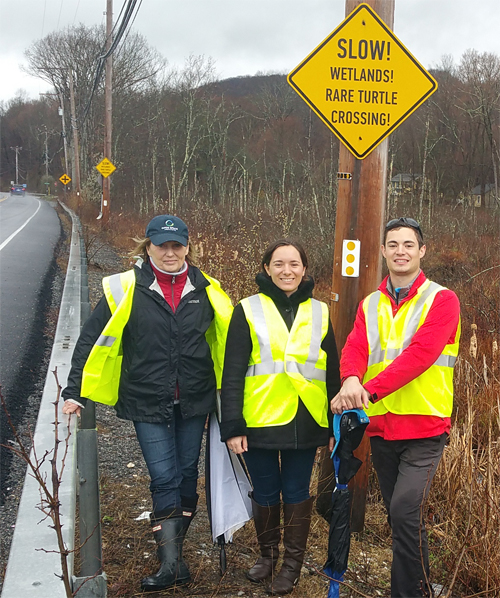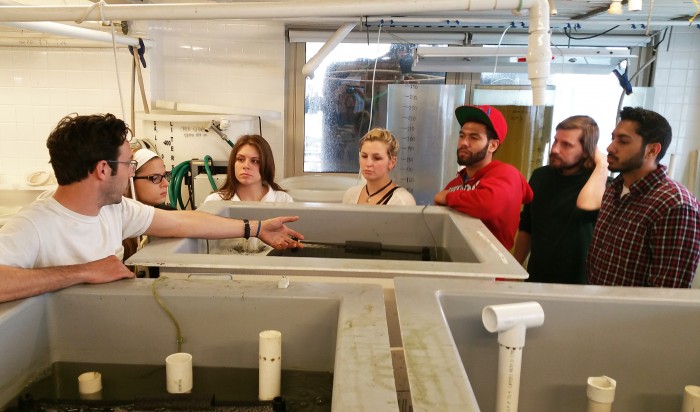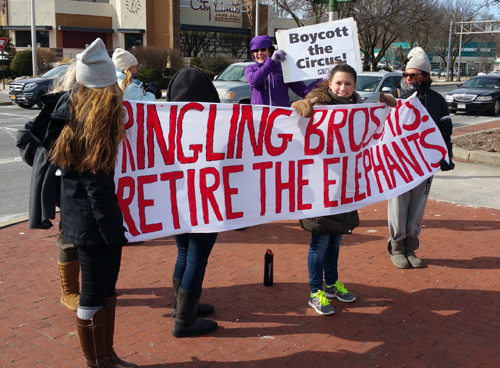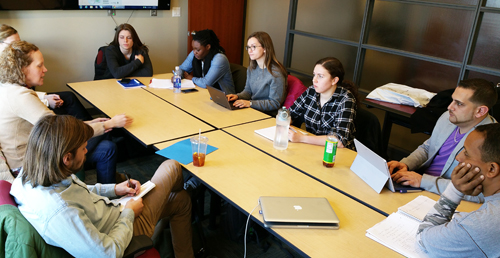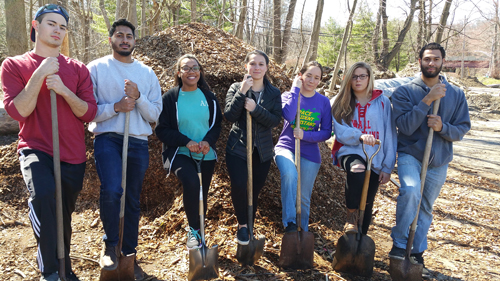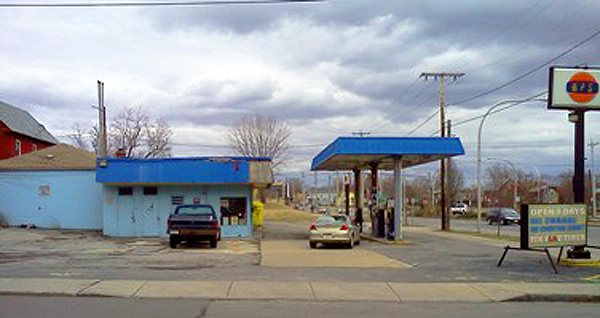
Soil and groundwater contamination beneath this gas station in Niagara Falls, NY will be remediated under New York State’s Brownfield’s Cleanup Program if sufficient funding is available.
Ed. Note: J. Justin Woods is a third-year Pace Law student and scholar at the Pace Land Use Law Center. More on Justin at the conclusion. ~ JC
Globalization has deindustrialized many areas of the state, leaving behind a legacy of environmental contamination, brownfield sites, and blight that are thwarting community revitalization. Clusters of contaminated sites are often concentrated in low-income neighborhoods, communities of color, and on formerly industrial waterways.
Globalization has deindustrialized many areas of the state, leaving behind a legacy of environmental contamination, brownfield sites, and blight that are thwarting community revitalization. Clusters of contaminated sites are often concentrated in low-income neighborhoods, communities of color, and on formerly industrial waterways.
Brownfields are not mere nuisances, they are also significant public health and environmental hazards that undermine a community’s tax base and revitalization goals. Further, the ability of municipalities to remediate contaminated sites and redevelop areas abandoned by the private market are hampered by a lack of resources and exacerbated by the state property tax cap. Therefore, highly functioning and integrated state level brownfield programs are essential to revitalizing environmentally and economically distressed communities across the state.
As part of the 2015-2016 Budget this spring, the Governor and Legislature extended the tax credits in the Brownfield Clean-Up Program (BCP) and passed significant reforms to all of the state’s brownfield programs. However, with the session nearing end, their work will not be complete without also passing a bill, S.5143 and A.7970 by Senator Tony Avella and Assemblyman Anthony Brindisi, to streamline and enhance the Brownfield Opportunities Areas Program (BOA).
The BOA program was crafted to enable low-income communities burdened with multiple brownfield sites, high incidence of disease, and high unemployment rates, to identify and implement alternatives to noxious uses at reclaimed brownfield sites. BOA accomplishes this by providing grants for area-wide redevelopment planning, which covers feasibility studies, market analyses and other important pre-development work.
The Legislature should not let the session expire without passing the BOA enhancement bill and sending it to the Governor for his signature.
In addition to being out of money, the problem with BOA is that the process has been cumbersome and slow, with multiple steps, funding cycles, and state-delayed contracts that have literally delayed local planning processes by years. These BOA reforms are supported by groups ranging from the New York Conference of Mayors, the New York City Environmental Justice Alliance, and New Partners for Community Revitalization.
This year’s budget amendments affect many aspects of the state’s other brownfield programs, including altering the eligibility for obtaining tax credits as well as how tax credits are calculated. Since 2003, the BCP has distributed more than $1 billion in tax credits to developers. However, critics have wanted to crack down on abuses of the BCP and see the tax credits distributed more broadly.
According to Environmental Advocates of New York, brownfield tax credits have been dispersed for projects in only 27 of the state’s 62 counties, and the average award of $8.5 million is inflated by a handful of obscene tax breaks in the NYC region. For example, the developer of the Ritz-Carlton in White Plains, New York received $114 million in brownfield tax credits.
The 2015/2016 Budget extends the BCP for ten years, and includes important reforms to protect taxpayers and promote brownfield redevelopment, particularly upstate. It accomplishes this by limiting tax credits for lucrative real estate projects in the NYC region to affordable housing and other specially designated projects while preserving broader incentives to simulate revitalization projects in more financially depressed communities.
The Budget also extends the state Superfund Cleanup Program for ten years, which has been instrumental in identifying, investigating and cleaning up hazardous waste sites throughout the state. The most exciting aspect of the Superfund extension is an annual $10 million appropriation for the Environmental Restoration Program (ERP), which helps remediate municipally owned sites that are often involuntarily acquired through abandonment and foreclosure.
The changes allows DEC, upon request and agreement with a municipality, to directly undertake ERP cleanup projects on behalf of municipalities. Given, many municipalities’ limited financial and technical resources, and the critical importance of the ERP funding to returning abandoned and foreclosed brownfield sites back to productive use, allowing DEC to directly undertake cleanups is a welcome departure from historical operation of the ERP as a reimbursable grant program.
Lastly, the budget deal includes minor reforms, but no new funding for the BOA program. With over 120 communities presently engaged in various stages of redevelopment planning, BOA integrates the state brownfield programs and strengthens communities’ abilities to conceive a realistic, cohesive redevelopment vision that can attract private investment while building on a neighborhood or community’s character and strengths. The Budget’s other brownfield reforms are significant and positive, but reforming and ultimately funding BOA is necessary to meaningfully redevelop distressed areas.
While tax credits and other incentives help to make some marginal properties available for redevelopment, a fully functioning and integrated BOA program is essential to aiding fiscally distressed communities afflicted with concentrated brownfields. The Legislature should not let the session expire without passing the BOA enhancement bill and sending it to the Governor for his signature.
«« »»
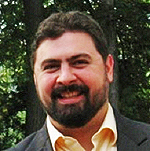 J. Justin Woods is a third year law and graduate student (J.D., L.L.M. & M.P.A. exp. 2016) focusing on environmental law and public administration at Pace University. He is also a Land Use & Sustainable Development Scholar at the Pace Land Use Law Center, which promotes the development of sustainable communities through innovative land use strategies. Mr. Woods has over 15 years of experience as a municipal planner, public administrator, and consultant, and he is Principal of J. Justin Woods, LLC.
J. Justin Woods is a third year law and graduate student (J.D., L.L.M. & M.P.A. exp. 2016) focusing on environmental law and public administration at Pace University. He is also a Land Use & Sustainable Development Scholar at the Pace Land Use Law Center, which promotes the development of sustainable communities through innovative land use strategies. Mr. Woods has over 15 years of experience as a municipal planner, public administrator, and consultant, and he is Principal of J. Justin Woods, LLC.




